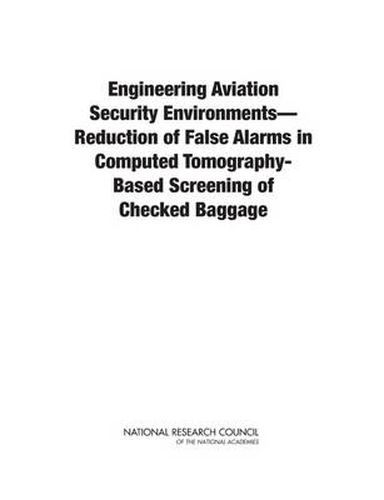Engineering Aviation Security Environments--Reduction of False Alarms in Computed Tomography-Based Screening of Checked Baggage
Committee on Engineering Aviation Security Environments--False Positives from Explosive Detection Systems,National Materials and Manufacturing Board,Division on Engineering and Physical Sciences,National Research Council

Engineering Aviation Security Environments–Reduction of False Alarms in Computed Tomography-Based Screening of Checked Baggage
Committee on Engineering Aviation Security Environments--False Positives from Explosive Detection Systems,National Materials and Manufacturing Board,Division on Engineering and Physical Sciences,National Research Council
On November 19, 2001 the Transportation Security Administration (TSA) was created as a separate entity within the U.S. Department of Transportation through the Aviation and Transportation Security Act. The act also mandated that all checked baggage on U.S. flights be scanned by explosive detection systems (EDSs) for the presence of threats. These systems needed to be deployed quickly and universally, but could not be made available everywhere. As a result the TSA emphasized the procurement and installation of certified systems where EDSs were not yet available. Computer tomography (CT)-based systems became the certified method or place-holder for EDSs. CT systems cannot detect explosives but instead create images of potential threats that can be compared to criteria to determine if they are real threats. The TSA has placed a great emphasis on high level detections in order to slow false negatives or missed detections. As a result there is abundance in false positives or false alarms. In order to get a better handle on these false positives the National Research Council (NRC) was asked to examine the technology of current aviation-security EDSs and false positives produced by this equipment. The ad hoc committee assigned to this task examined and evaluated the cases of false positives in the EDSs, assessed the impact of false positive resolution on personnel and resource allocation, and made recommendations on investigating false positives without increase false negatives. To complete their task the committee held four meetings in which they observed security measures at the San Francisco International Airport, heard from employees of DHS and the TSA. Engineering Aviation Security Environments–Reduction of False Alarms in Computed Tomography-Based Screening of Checked Baggage is the result of the committee’s investigation. The report includes key conclusions and findings, an overview of EDSs, and recommendations made by the committee.
This item is not currently in-stock. It can be ordered online and is expected to ship in approx 4 weeks
Our stock data is updated periodically, and availability may change throughout the day for in-demand items. Please call the relevant shop for the most current stock information. Prices are subject to change without notice.
Sign in or become a Readings Member to add this title to a wishlist.


